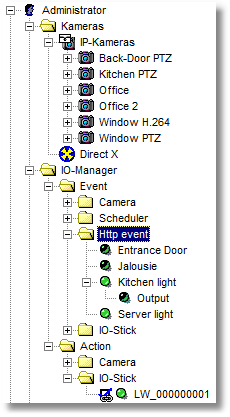Discontinued product - End-of-Life & End-of-Support, please use the new go1984 Mobile Client.
Use the Android application "go1984 HD", available from the Google Play store, to access the go1984 web server and to look at live images or recordings, and control PTZ cameras.
"go1984 HD" does this by connecting via the WLAN or GPRS/Edge/UMTS to one or more servers which have a version of go1984 running on them from version 3.8.5.0 onward.
To create a new server, first press the "Menu" hardware button and then click on the "+" icon.
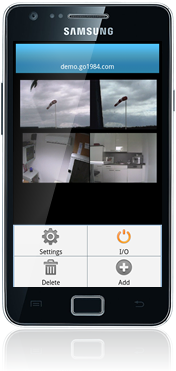
Apply the following settings to be able to access the go1984 web server successfully:
Host |
IP address or dynamic hostname of your go1984 PC (without inputting http://) |
Port |
Web server port, set, as before, in the go1984 web server configuration (default = 80) |
Username |
Username, as specified in the go1984 user administration |
Password |
Password, as specified in the go1984 user administration |
Quality |
Desired image quality. To request the images in original quality, move the slider completely to the right. The further to the left you move the slider, the more the live images will be compressed. This means that the best possible connection can be established even with locations that have a small bandwidth |
If you want to delete again a previously defined go1984 server, first press the "Menu" hardware button and then "Delete".

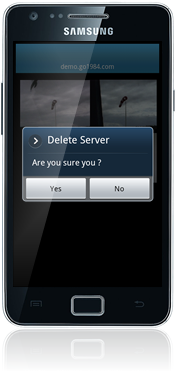
To complete the settings, press the "Save" button. You can then access the views from the live cameras directly. Additional go1984 servers can be added using the above-described procedure. The individual servers can then be chosen by selecting the relevant tab above the camera images:
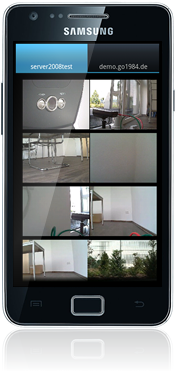
Swipe across the screen to show further cameras. Tap on an image to zoom in to the camera you want. If it is a movable PTZ camera, you have the option to move the camera by tapping in the live image. You can also control cameras that support area zoom by opening a frame in the image using two fingers. You will find control panels for cameras beneath the image with zoom functionality ("-" and "+"), as well as the option to control the positions previously defined in go1984 ("1"-"8").
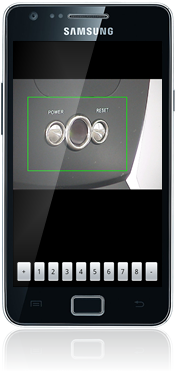
You can use a digital PTZ function with fixed cameras without any optical zoom. Zoom in to the area you want simply by placing your finger briefly on the point you want and swiping your finger up. This can help you make important details recognizable, especially in the case of high-resolution megapixel cameras.
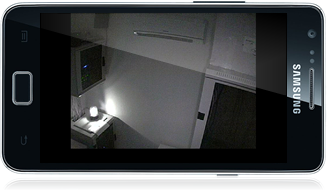
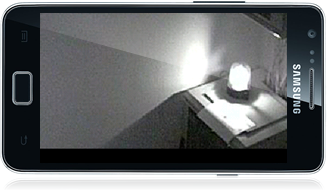
Place your finger again briefly on the screen and swipe your finger down to display the complete image, based on the digital PTZ that has taken place.
Press the "Back" hardware button to return to the camera view. Press the "Menu" hardware button and then select "Recordings" to display the list of recordings for the camera you've just chosen.
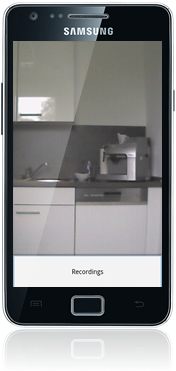
Once again, you can swipe over the screen to scroll through the recordings and tap on an image to play the recording you want. During playback you also have available the digital PTZ function described above. Tap and slide the progress bar that is displayed below the scene to go quickly to wherever you want in the recording.
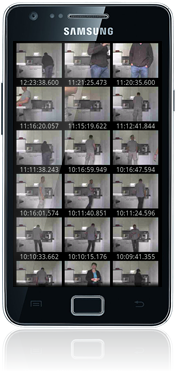
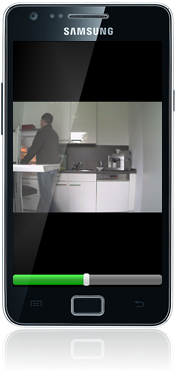
After pressing the "Menu" hardware button, you can select the day you want via the "Date" option:
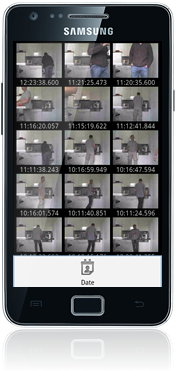
If you have created "Http events" on the highlighted go1984 server, you can activate them via the client. You can find out more about Http events in the relevant section by clicking here. To show the digital outputs available, after pressing the "Menu" hardware button, tap the "I/O" option while you are in the camera view:

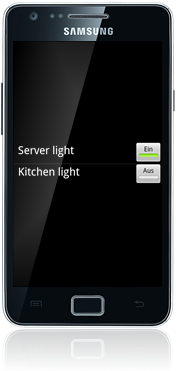
This allows you to "control remotely" certain functions in go1984 (e.g. activating/deactivating alarm functions, activating/deactivating cameras, etc.) or activate the digital outputs that are available from IP cameras or the logiware I/O stick. The figure below illustrates, for instance, the connection for activating the digital output on the logiware I/O stick via the Http event (in this case, "Kitchen light"):
